What makes orange cats special?
Like humans, there are ginger-colored cats. They are often thought of as lazy layabout cats, but what is the truth?
Find out in this article, as I go through 11 fun facts about orange cats.
Let’s get into the article.
My goal with this website is to help cat owners learn more about taking care of their cats. I am not a veterinarian and I recommend seeking the advice of a vet for any further questions relating to your cat’s health.
11 Fun Facts About Orange Cats
1. Most Orange Cats Are Male
If you see an orange cat, it’s more likely a male.
The orange color gene (O) codes for orange, by releasing phaeomelanin. This is a type of melanin pigment that creates an orange color.
The O gene is only on the X chromosome.
When a cat is dominant for the orange gene, they have an orange color.
A recessive orange gene produces a black or brown color.
A male has only one X chromosome, which means there’s a 50% chance of being orange.
Females have two X chromosomes.
On female cats, if one orange gene is dominant and the other recessive, they become tri-colored cats (e.g. tortoiseshell)
It’s less likely that two copies of the orange gene ‘line up’ compared to one with female cats.
Bottom Line: Males have one X chromosome and only need one dominant copy of the orange gene to become orange. Females have two X chromosomes and must have two dominant orange copies.
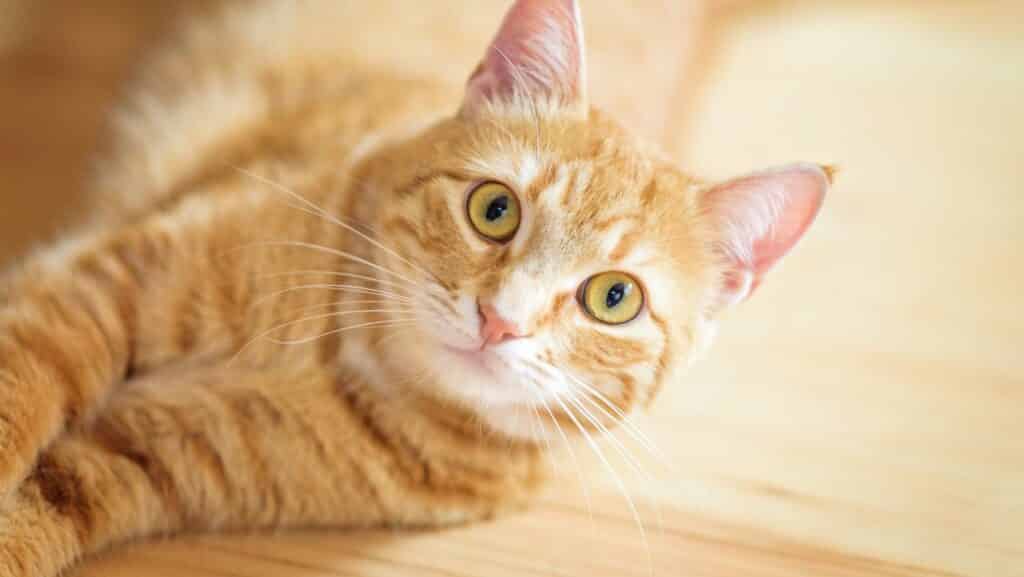
2. All Orange Cats Are Tabbies
The agouti gene produces tabby cats.
The agouti gene gives tabbies their vast array of patterns and blotches.
All cats get two copies of the agouti gene.
If the cat has two recessive copies of the agouti gene, they are solid-colored cats without tabby patterns.
When a cat has two dominant copies of the agouti gene, they are tabbies.
The orange gene suppresses the recessive agouti gene.
This prevents orange cats from becoming solid-colored cats.
Bottom Line: The orange gene blocks the recessive agouti gene. This ensures an orange cat produces tabby patterns.
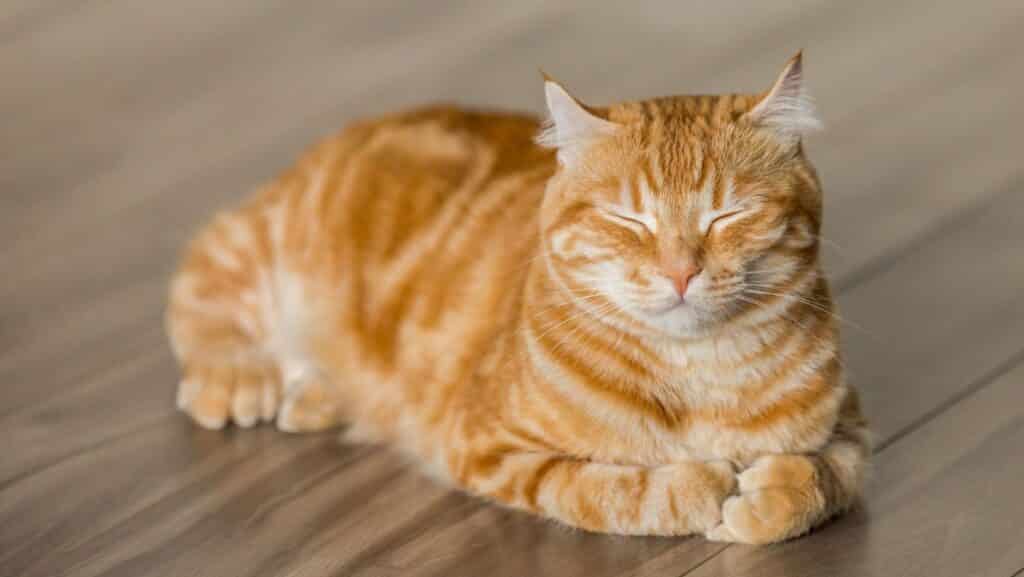
3. Orange Cats Are Larger Than Non-Orange Cats
Are all orange cats large voracious eaters?
Well, there’s some truth to this.
A greater size allows more dominance in the cat hierarchy. This leads to more mating opportunities.
Orange cats enjoy increased size to beat out their competition. This appears a consistent feature of polygynous mammal societies.
Orange cats appear more in rural and farm cat communities.
Dense urban areas put the aggressive and larger orange cat at a disadvantage. This is because they are prone to fighting and at greater risk of road trauma.
Bottom Line: Orange cats are larger than non-orange cats to improve their mating success
Read more:
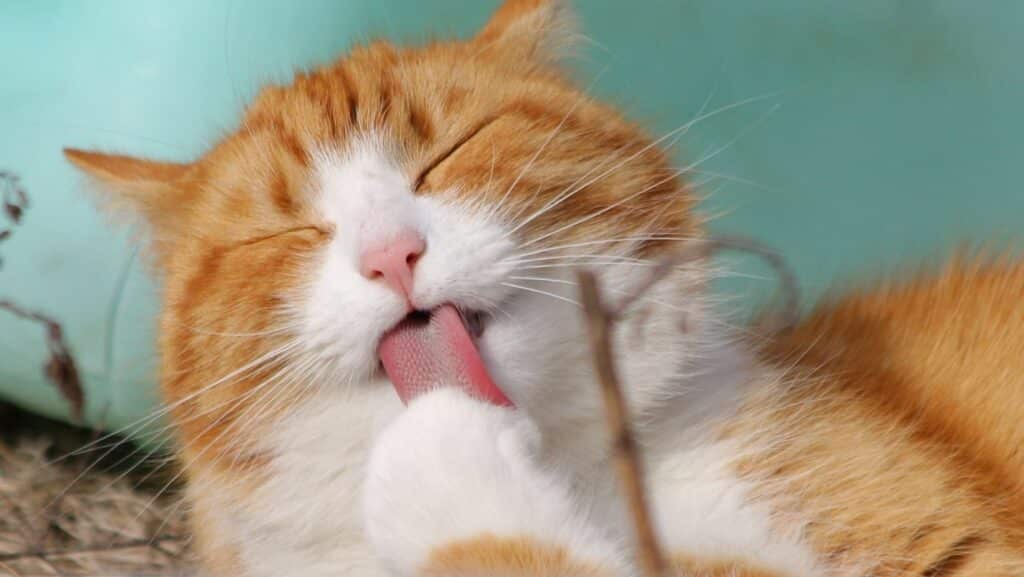
4. Female Orange Cats Are Lighter Than Non-Orange Cats
It may seem counter-intuitive, but this is due to sexual dimorphism.
Sexual dimorphism is when the male (or female) is larger than the other gender in a species.
This sexual dimorphism is greater in orange cats (32% vs 16% in non-orange cats).
The explanation is that female cats reach sexual maturation faster if they only grow to a limited size.
This increases mating opportunities.
Bottom Line: Orange female cats are smaller than non-orange female cats which helps reach sexual maturation faster
5. Orange Cats Aren’t A Breed
An orange cat isn’t a separate breed of cat.
Rather, there are a variety of breeds that produce orange-colored cats.
They include:
- Devon Rex
- Maine Coon
- Bengal
- Bobtail
Bottom Line: An orange cat isn’t a breed of cat. Many breeds have orange cats
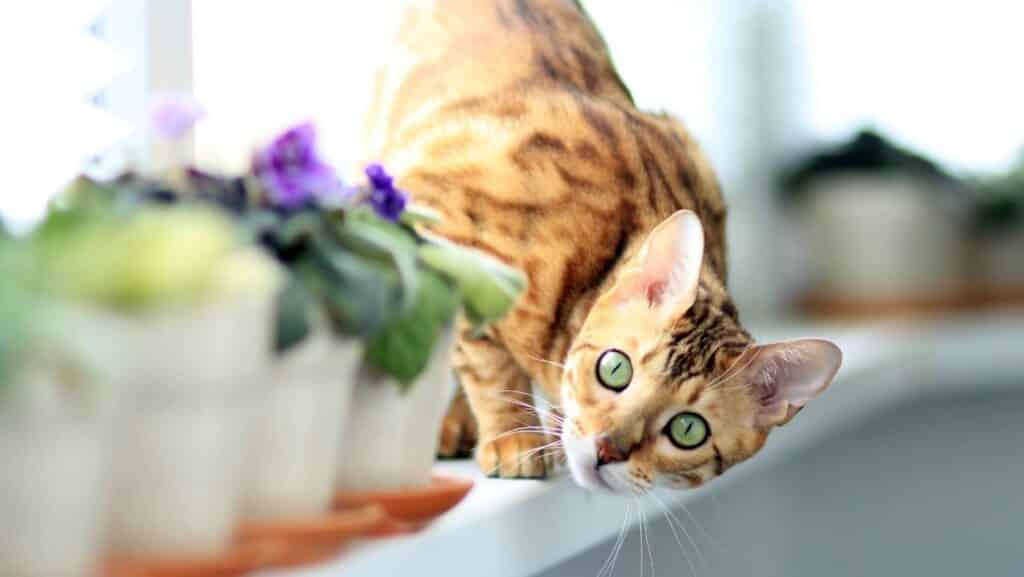
6. Tortoiseshell Cats May Not Have An Attitude
It’s often thought that tortoiseshell cats are feisty and ill-tempered.
Some refer to this as ‘tortitude’. This is a negative owner bias, research finds.
It’s based on the widespread belief among cat owners that orange cats are notorious for being unfriendly.
Yet, orange cats don’t appear any more unfriendly than other types of cats. Some breeds may more or less outgoing and friendly.
Kittens that get socialized in the first three months of development are more friendly. This points to the importance of raising cats.
Bottom Line: Tortitude is a negative owner bias. It’s based on the widespread belief that tortoiseshell are unfriendly cats
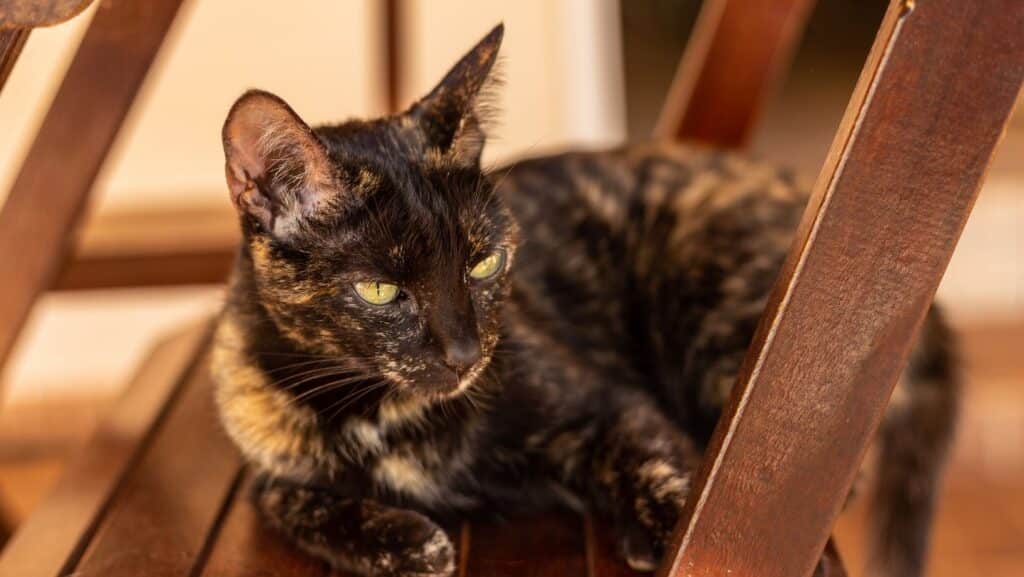
7. The Most Popular Name For An Orange Cat Is…
It depends on where you live.
Australians have a soft spot for names like Tiger and Puss.
The Brits like fancy-sounding names like Molly and Charlie.
Can you guess what the most popular Italian cat name is?
It’s Romeo (why wouldn’t it be)?
Popular orange cat-friendly names include:
- Oscar
- Tiger
- Tigger
- Ginger
- Max
- Kitty
- Mikan
- Maron
Bottom Line: The most popular cat names are location-specific.
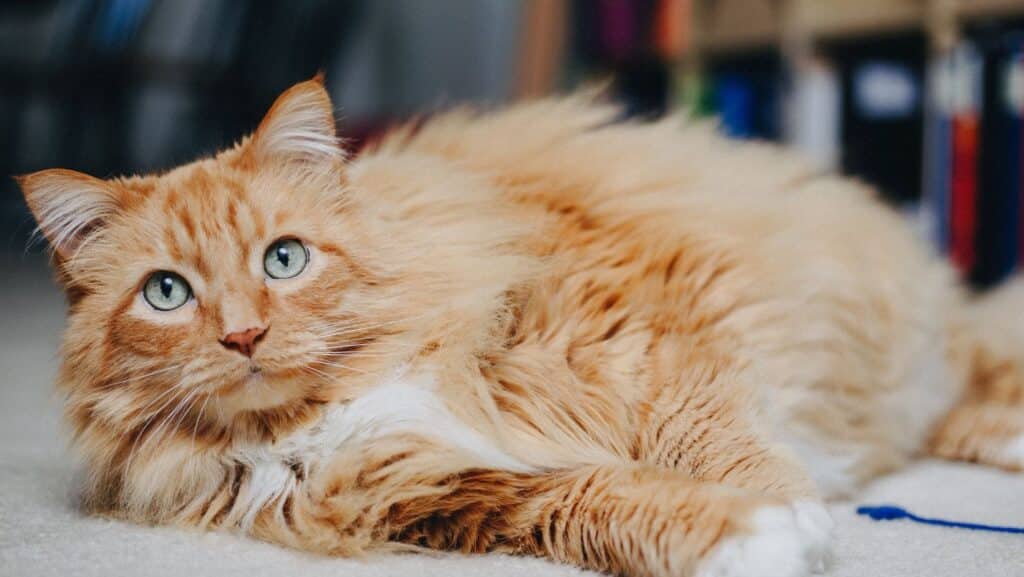
8. Orange Cats Are At Greater Risk Of Disease
Orange cats have a higher risk of feline immunodeficiency virus (FIV) than non-orange cats.
The disease may transfer from deep bites wounds or commensal grooming.
It is a rare disease and symptoms include fever, weight loss, and lethargy.
If you suspect your cat has a health problem, consult your vet for help.
Bottom Line: Orange cats have a higher risk of FIV. Contact a vet if you notice changes in your cat’s health
9. Most Tortoiseshell Orange Cats Are Female
Females are more likely to be tortoiseshells as opposed to orange cats.
This is due to the orange gene appearing on the X chromosome.
A recessive orange gene makes a darker brown or black color.
A dominant orange gene produces orange.
When female cats have one dominant and one recessive orange gene, they become tortoishell or calico cats.
Bottom Line: Most tortoishell and calico cats are female due to a combination of two orange genes
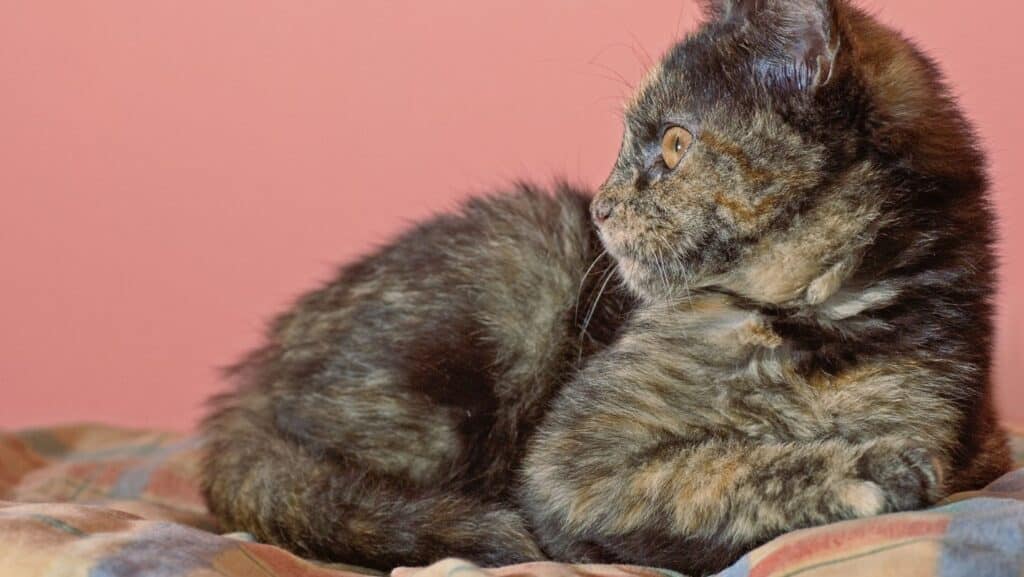
10. Male Tortoiseshell Cats Are Rare
Males have an X and a Y chromosome.
This means they only get one copy of the orange gene.
Either the gene is recessive (dark brown or black color) or dominant (orange).
There’s no combination of the two.
The only way a male becomes a tortoiseshell is through genetic mutation.
The most common mutation is an XXY karyotype which is rare.
Male tortoiseshell cats have a few characteristics that include small size and infertility.
Bottom Line: Male cats are rarely tortoiseshell due to only having one orange gene that is either on or off
Read more:
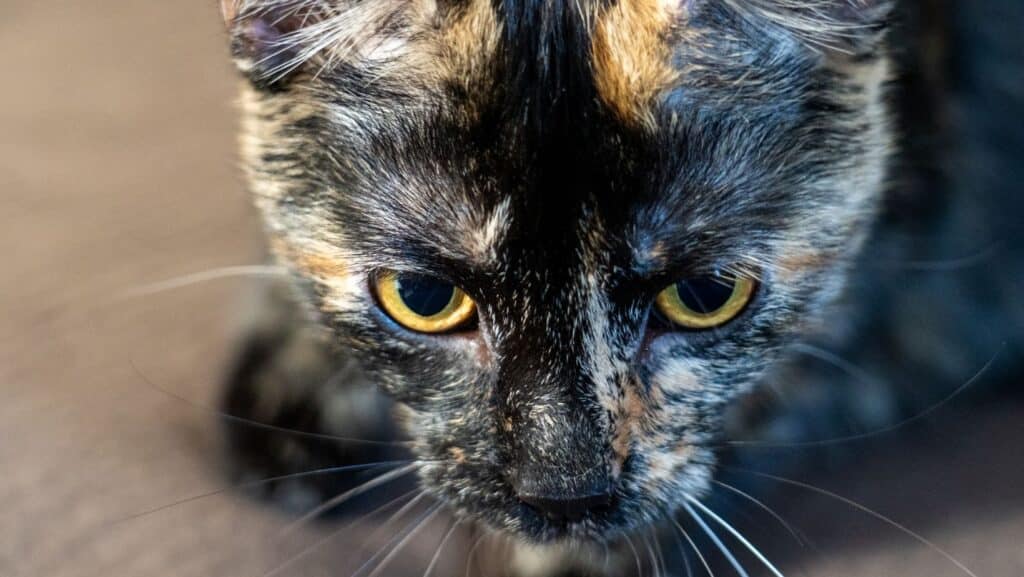
11. Orange Cats Have An M On Their Forehead
Since orange cats are tabbies, they have a distinctive M marking on their forehead.
There is a lot of folklore about this marking.
Examples include:
- Relating to Virgin Mary
- Mau (name of cats in ancient Egypt)
- Mohammed (tabby cat lover)
The reality is, the M is probably due to genetics.
Is that a fun answer though?
Bottom Line: Oranges cats have an M on their forehead which may represent different things based on folklore
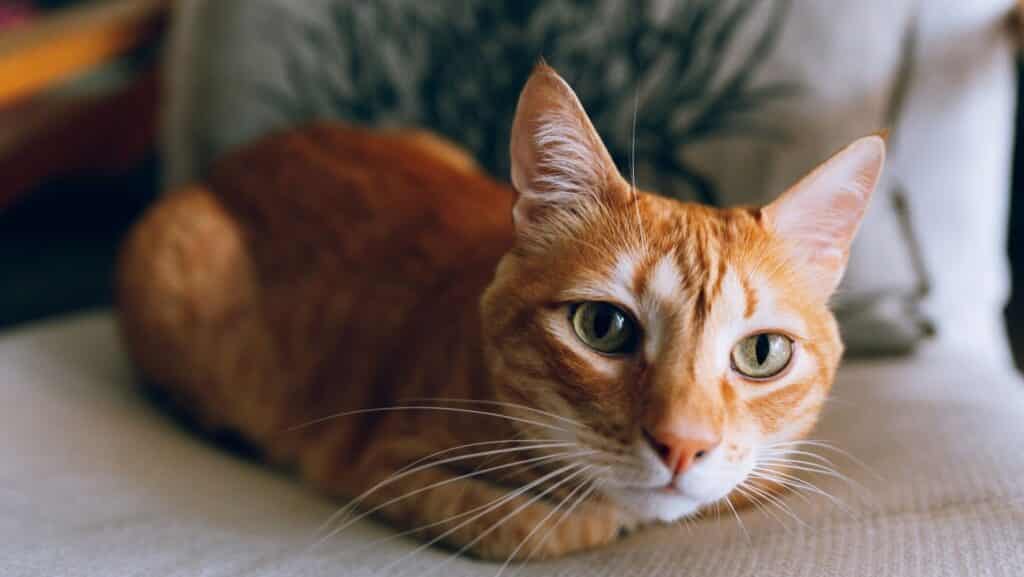
Frequently Asked Questions
What Is The Personality Of An Orange Cat?
The personality of a cat depends on many factors including:
- Early life socialisation
- Breeding
- Traumatic life events
- Stress
- Diet
- Gender
- Neutering
In the wild, orange cats tend to be more aggressive and larger cats. This helps when competing for sexual and food resources.
However, domesticated cats are more docile and well-natured.
Female tortoiseshell cat’s attitude is a social bias, from the widespread belief they are unfriendly.
Some breeds are more extroverted and friendly in general.
- British Shorthair
- Norwegian Forest
- Ragdoll
- Persian
- Saint Birman
Bottom Line: Cat personality depends on a wide variety of social and genetic factors
What Is The Lifespan Of An Orange Cat?
Based on research, cats live between 13-17 years. The average lifespan is 14 years.
Breed affects longevity.
Orange cats may be different breeds, so lifespan may vary.
Crossbred cats live slightly longer (14 years average) than purebred cats (12.5 years).
Bengals lived to only 7 years on average and Abyssian cats live 10 years.
Diet and lifestyle affect the lifespan of your cat.
Wild orange cats may be at a higher risk of death due to increased aggression.
Bottom Line: An orange cat lives about 14 years. Different breeds may live longer or shorter lives, and diet impacts longevity.
What Kind Of Cat Is An Orange Cat?
An orange cat may be many breeds.
They are always tabbies.
The white spotting gene influences the white on a cat’s coat.
This gene affects melanocytes which block pigment on some areas of a cat’s body.
There are also genes that modify coat length among other things.
Bottom Line: An orange cat may be a wide variety of different breeds with variations to white color, coat length, eye color, and temperament
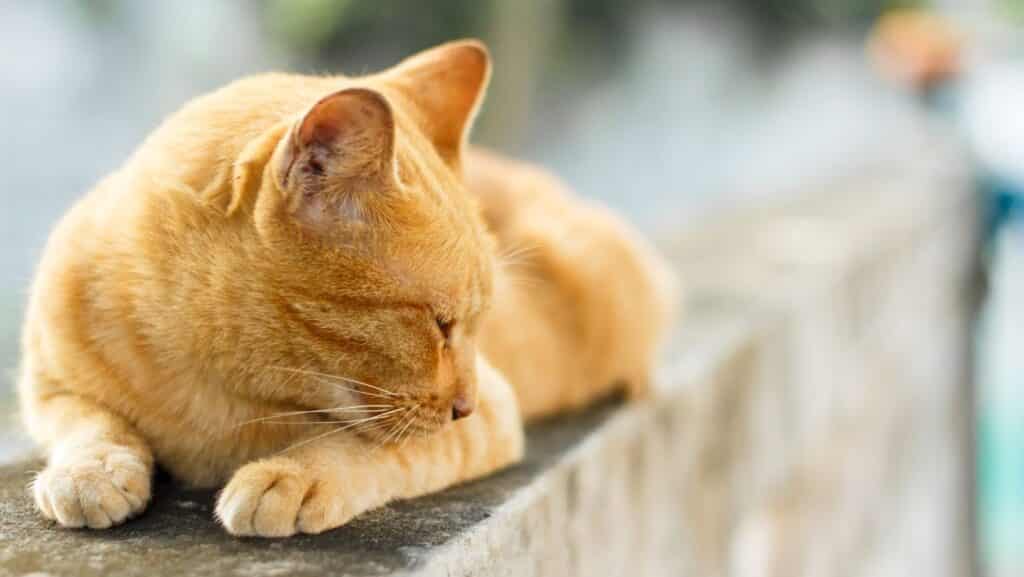
Conclusion
Orange cats are tabbies.
The orange color is an X chromosome-linked gene.
Males are more likely orange due to only needing one dominant copy of the orange gene. Females need two copies lined up to become orange.
A female with one dominant and one recessive orange gene becomes a tortoishell or calico cat.
Orange male cats tend to be a little larger than their non-orange counterparts. This improves their chance of reproductive success.
